Type Settlement Local time Wednesday 6:22 AM | ||
 | ||
Weather 8°C, Wind N at 19 km/h, 70% Humidity | ||
Halicarnassus (/ˌhælᵻ.kɑːrˈnæsəs/; Ancient Greek: Ἁλικαρνᾱσσός Halikarnāssós or Ἀλικαρνασσός Alikarnāssós; Turkish: Halikarnas) was an ancient Greek city at the site of modern Bodrum in Turkey. It was located in southwest Caria on a picturesque, advantageous site on the Ceramic Gulf. The city was famous for the tomb of Mausolus, the origin of the word mausoleum, built between 353 BC and 350 BC, and one of the seven wonders of the ancient world. It was part of the Persian Empire (Achaemenid Empire) until captured by Alexander the Great at the siege of Halicarnassus in 334 BC.
Contents
- Halicarnassus over the walls rome total war alexander
- Etymology
- Mycenaean presence in the area
- Early history
- The Hekatomnid dynasty
- Alexander the Great and Ada of Caria
- Later history
- Notable people
- References
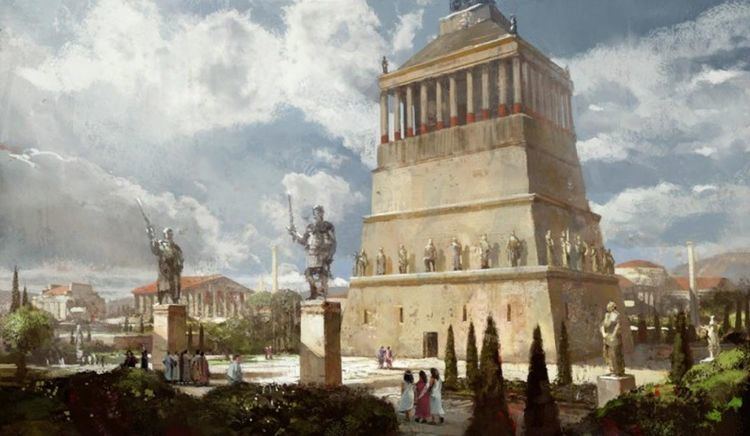
Halicarnassus originally occupied only a small island near to the shore called Zephyria, which was the original name of the settlement and the present site of the great Castle of St. Peter built by the Knights of Rhodes in 1404; but in course of time the island united with the mainland and the city extended to incorporate Salmacis, an older town of the Leleges and Carians and site of the later citadel.
Halicarnassus over the walls rome total war alexander
Etymology

The suffix -ᾱσσός of Greek Ἁλικαρνᾱσσός is indicative of a substrate toponym. It has been recently proposed that the element -καρνᾱσσός is cognate with Luwian (CASTRUM)ha+ra/i-na-sà / (CASTRUM)ha+ra/i-ni-sà 'fortress'. If so, the toponym is probably borrowed from Carian, a Luwic language spoken alongside Greek in Halicarnassus. The Carian name for Halicarnassus has been tentatively identified with Alos-δ karnos-δ in inscriptions.
Mycenaean presence in the area
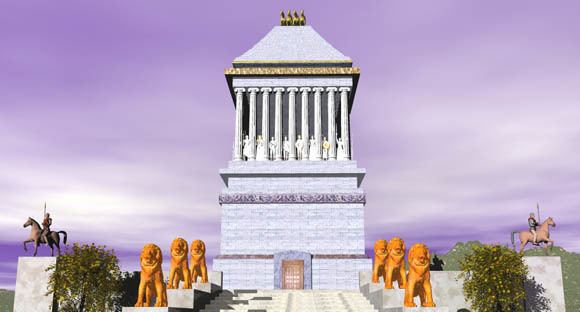
Some large Mycenaean tombs have been found at Musgebi (or Muskebi, Ortakent), not far from Halicarnassus. According to Turkish archaeologist Yusuf Boysal, the Muskebi material, dating from the end of the fifteenth century BC to ca. 1200 BC, provides evidence of the presence, in this region, of a Mycenaean settlement.
More than forty burial places dating back to that time have been discovered. A rich collection of artifacts found in these tombs is now housed in the Bodrum Castle.
These finds cast some light on the problem of determining the territories of ancient Arzawa and Ahhiyawa.
Early history
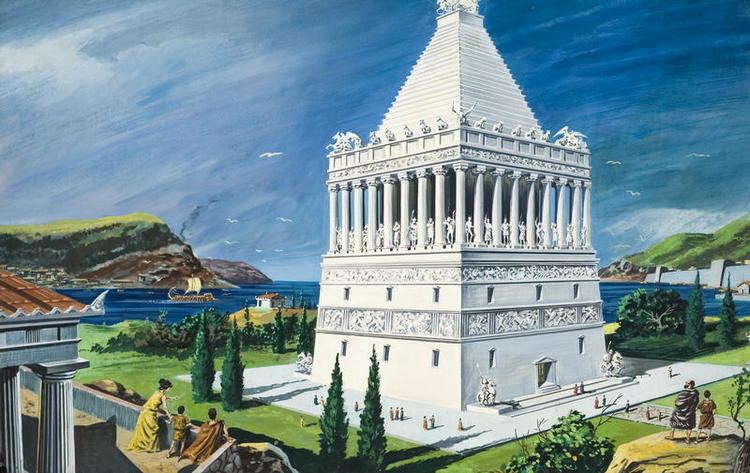
The founding of Halicarnassus is debated among various traditions; but they agree in the main point as to its being a Dorian colony, and the figures on its coins, such as the head of Medusa, Athena or Poseidon, or the trident, support the statement that the mother cities were Troezen and Argos. The inhabitants appear to have accepted Anthes, a son of Poseidon, as their legendary founder, as mentioned by Strabo, and were proud of the title of Antheadae.

At an early period Halicarnassus was a member of the Doric Hexapolis, which included Kos, Cnidus, Lindos, Kameiros and Ialysus; but it was expelled from the league when one of its citizens, Agasicles, took home the prize tripod which he had won in the Triopian games, instead of dedicating it according to custom to the Triopian Apollo. In the early 5th century Halicarnassus was under the sway of Artemisia I of Caria (also known as Artemesia of Halicarnassus ), who made herself famous as a naval commander at the battle of Salamis. Of Pisindalis, her son and successor, little is known; but Lygdamis, who next attained power, is notorious for having put to death the poet Panyasis and causing Herodotus, possibly the best known Halicarnassian, to leave his native city (c. 457 BC).
The Hekatomnid dynasty

Hecatomnus became king of Caria, at that time part of the Persian Empire, ruling from 404 BC to 358 BC and establishing the Hekatomnid dynasty. He left three sons, Mausolus, Idrieus and Pixodarus—all of whom—in their turn, succeeded him in the sovereignty; and two daughters, Artemisia and Ada, who were married to their brothers Mausolus and Idrieus.
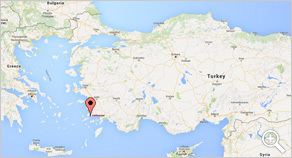
Mausolus moved his capital from Mylasa to Halicarnassus. His workmen deepened the city's harbor and used the dragged sand to make protecting breakwaters in front of the channel. On land they paved streets and squares, and built houses for ordinary citizens. And on one side of the harbor they built a massive fortified palace for Mausolus, positioned to have clear views out to sea and inland to the hills—places from where enemies could attack. On land, the workmen also built walls and watchtowers, a Greek–style theatre and a temple to Ares—the Greek god of war.

Artemisia and Mausolus spent huge amounts of tax money to embellish the city. They commissioned statues, temples and buildings of gleaming marble. When he died in 353 BC, his wife, sister and successor, Artemisia II of Caria, began construction of a magnificent tomb for him and herself on a hill overlooking the city. She died in 351 BC (of grief, according to Cicero, Tusculan Disputations 3.31). According to Pliny the Elder the craftsmen continued to work on the tomb after the death of their patron, "considering that it was at once a memorial of his own fame and of the sculptor's art," finishing it in 350 BC. This tomb of Mausolus came to be known as the Mausoleum, one of the seven wonders of the ancient world.
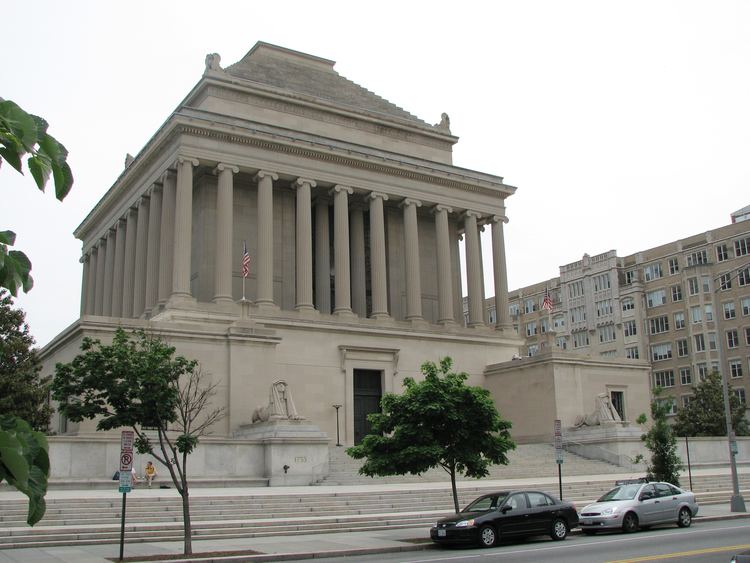
Artemisia was succeeded by her brother Idrieus, who, in turn, was succeeded by his wife and sister Ada when he died in 344 BC. However, Ada was usurped by her brother Pixodarus in 340 BC. On the death of Pixodarus in 335 BC his son-in-law, a Persian named Orontobates, received the satrapy of Caria from Darius III of Persia.
Alexander the Great and Ada of Caria
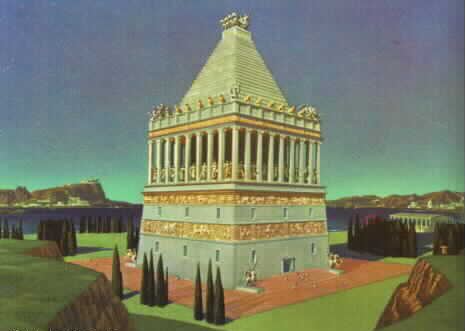
When Alexander the Great entered Caria in 334 BC, Ada, who was in possession of the fortress of Alinda, surrendered the fortress to him. After taking Halicarnassus, Alexander handed back the government of Caria to her; she, in turn, formally adopted Alexander as her son, ensuring that the rule of Caria passed unconditionally to him upon her eventual death. During the siege of Halicarnassus the city was fired by the retreating Persians. As he was not able to reduce the citadel, Alexander was forced to leave it blockaded. The ruins of this citadel and moat are now a tourist attraction in Bodrum.
Later history
Not long afterwards the citizens received the present of a gymnasium from Ptolemy and built in his honour a stoa or portico. Under Egyptian hegemony, around 268 BC, a citizen named Hermias became Nesiarch of the Nesiotic League in the Cyclades.
Halicarnassus never recovered altogether from the disasters of the siege, and Cicero describes it as almost deserted.
Baroque artist Johann Elias Ridinger depicted the several stages of siege and taking of the place in a huge copper engraving as one of only two known today from his Alexander set.
The Christian and later history of the site is continued at Bodrum.
